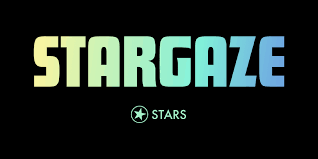Stargaze - Part 2 - Tokenomics and Burns
Stargaze deepdive part 2 tokenomcis and burns. Stargaze is a premier NFT marketplace in Cosmos.

*** Disclaimer none of this is financial advice. Curious Cosmonaut received no funds to write this and has been fully self-funded so far.
This is part 2 of a 3 part series on a deep dive into all things Stargaze.
Part 1 covers an overview of Stargaze (Done)
Part 2 covers tokenomics and burns
Part 3 data, collections, technology, and threats (Tomorrow)
Tokenomics
The Stargaze team had a unique airdrop and tokenomics model. First, the token model is based on high inflation early on, and then it rapidly decreases. It has a max supply of 4 billion STARS and started with 1 Billion created at launch. This is how the distribution looks with their thirdening model.
This model and decreasing issuance of tokens over time allow the earliest investors and users to stake and earn STARS for supporting the ecosystem.
For Stargaze’s original token release it followed this model:
- 21.5% went to the foundation to support the protocol, grants, and onboarding projects.
- 20% went to the community pool. This pool can enable community feedback and funded projects and be used for incentives discussed later.
- 25% was airdropped to the Cosmos community with requirements to fundamentally get comfortable with the ecosystem, such as doing an NFT mint, staking, voting on a proposal, and buying an NFT. This, like other airdrops, was used to bootstrap the network's security and attract a community of users.
- 16% went to the seed investors. These are on a lockup period.
- 10% to founders. These are on a lockup period.
Stargaze also excluded exchange validators from the airdrop to help decentralize the holders. As new tokens are released, it should drive further decentralization or community ownership. The release schedule is the following:
- 45% to NFT incentives. These incentives are for people actively buying and selling NFTs. Today this goes to the community pool though until new features are released.
- 35% to stakers. These are the individuals helping secure the network in exchange for a lockup period.
- 15% to the developer incentives. This is for continued funding of long-term goals.
- 5% to the community pool. This can be used for various community driven initiatives.
These tokenomics work to decentralize the network with time. It also attempts to put the future of the ecosystem in the hands of the users. Unfortunately, this is not true of many NFT exchanges.
The incentive for NFT traders could be a critical part of the ecosystem. Given the highest inflation portion to those who actively not passively use the platform is an interesting experiment. This pushes the platform's most active users to care about the success and even help improve the ecosystem instead of just trade.
Stargaze’s inflation model also allows investors who like their platform to buy STARS and create a self-funding NFT collection using their inflation/transaction payments to buy NFTs.
Tokenomics - burning and minting tokens
Stargaze according to their dashboard at the time of writing this has done around 4.6 Million USD worth of NFT sales. This equated to 143,573,316 STARS. This has led to 8,213,514 STARS being burned which is $513,530 USD worth of STARS burned.
Over the last 30 days Stargaze burned 592,929 STARS which averaged 19,764 STARS a day. This averaged $431 a day on average. The average daily burns since inception have been 22,259 STARS and $1,392 USD a day. This does indicate that in dollars, the marketplace activities and creation of NFTs may have slowed down.
For creating longer-term deflationary pressure and incentive for stakers, Stargaze has introduced the concept of“FairBurns”. All fees on Stargaze go through this FairBurn process where 50% of the fee goes to stakers and 50% to be burned. For example there is a 1,000 STARS creation fee where 50% is burned and 50% goes to stakers. Whitelist contracts are 100 to 400 STARS with the same 50/50 model.
New NFT mints have a protocol fee of 10% where 50/50 goes to burn and stakers.
Many who follow NFTs know a lot of the volume comes from marketplaces, not the initial mint. Stargaze charges a 1% burn and 1% to the stakers for marketplace transactions. So this marketplace FairBurn opens up a significant burning potential long term for Stargaze and reward capture for stakers.
With time STARS could become deflationary if there is enough buying and selling compared to inflation. In year 4, new inflation will be 296 Million STARS. If around 30 Billion in STARS swaps hands in the marketplace, not including any new mints which have a higher burn, STARS will be a 0% inflation. That's about 630 Million USD worth of Stars swapping hands in the marketplace in today's dollars. At the same time, stakers still would have likely received over 25% in staking rewards. This means that STARS has a long way to go but it is possible. At the time of writing this OpenSea did 263 Million in sales in 30 days.
Based on basic projections of their historic average into the future STARS would not be deflationary until year 13 but that does not mean staking will not become even more lucrative. This is a very basic approach though and it is very difficult to truly model. For example, as STARS is inflated it may be worth less but collections may be priced the same in USD. Therefore as volumes pick up more and more STARS may be burned. They may also introduce other services that would increase burning.
Should you hold STARS
This is an unfortunately common topic brought up even with Stargaze NFT holders. They debate if they should hold stable assets or some larger assets such as ATOM and convert to buy NFTs as needed. Ultimately this is up to every individual but staking rewards about match the inflationary if you stake your STARS. If the pace of the burns over the last 30 days continued over the next year then around 7.2 Million STARS would be burned. If inflation in that time is about 550 Million that would be a reduction of the inflation of about 1.3% and a 1.3% premium given to stakers.
Assuming that STARS stays similar to how it is today staking wise of about 39% of tokens being staked that makes the premium given to stakers around 3.34%. In theory that would make the staking rate higher than the inflation rate. Therefore if you like Stargaze for all the other reasons discussed in this paper STARS may be an asset you want to hold to dictate the future of the platform.
The challenge is certainly holding STARS without being staked and you are having your holdings be rapidly diluted if demand does not go up to meet that inflation.
Now please give us a follow and follow along as Curious Cosmonaut finishes up this 3 part series tomorrow!


